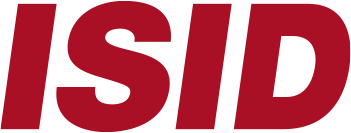In modern surgical departments, medical video imaging software plays a crucial role in streamlining workflows, enhancing precision, and improving patient outcomes. With the increasing complexity of surgeries and the need for accurate documentation, utilizing medical video imaging software efficiently can significantly enhance the overall performance of surgical teams. This article explores the key benefits of implementing a medical video imaging software and how it can be integrated seamlessly into daily workflows.
Key Benefits for Streamlining Workflows with Medical Video Imaging Software
Medical video imaging software has become an indispensable tool in surgery departments, offering an effective way to document procedures, aid in diagnostics, and improve training. However, to fully leverage its potential, it is critical to know the advantages of this kind of software. From integrating the software with hospital systems to ensuring ease of access and proper data management, optimizing the use of medical video tools can significantly enhance surgical efficiency, reduce errors, and improve patient outcomes. This section will discuss key strategies to improve workflow through better video management practices.
1. Centralizing Video Data for Easy Access
One of the key factors in improving efficiency is having a centralized system where all video data from surgical procedures is stored and easily accessible. Centralized storage eliminates the need to search across different devices or departments for specific recordings, saving valuable time during pre- and post-surgery reviews. By having all surgical video data in one place, medical professionals can quickly retrieve the footage they need for diagnostics, teaching, or legal purposes.
2. Integrating Video Software with Hospital Information Systems (HIS)
Integration of medical video imaging software with the Hospital Information System (HIS) is another critical practice for optimizing workflow efficiency. When videos are directly linked to patient records, healthcare providers can access all relevant information—including surgical videos, diagnostic images, and patient history—through one interface. This seamless connection improves collaboration across departments, speeds up the decision-making process, and reduces the risk of miscommunication or lost data.

3. Implementing Advanced Search and Retrieval Capabilities
Efficient retrieval of surgical videos is essential for streamlining workflows. Implementing software with advanced search functions—such as keyword-based searches, timestamp filters, or tagging systems—allows medical staff to locate the specific footage they need within seconds. Whether for follow-up care, training purposes, or preparing for future surgeries, fast access to precise videos ensures smoother operations.
4.Training Staff on Medical Video Imaging Software
Proper training of medical personnel on how to use video imaging software is a vital step to maximize its efficiency. A well-trained team can quickly navigate the software, integrate video data into patient records, and effectively use the system’s features. Hospitals should offer continuous training and create easy-to-follow guides to ensure that all surgical staff remain proficient in using the technology. Additionally, user-friendly interfaces can reduce learning curves, allowing staff to become proficient in less time.
5. Leveraging AI and Advanced Analytics for Better Outcomes
Many modern medical video imaging platforms integrate AI and advanced analytics, which can assist surgeons in identifying patterns, anomalies, or areas of interest within surgical recordings. These tools can enhance the diagnostic process by flagging potential issues during surgeries and providing real-time feedback. By adopting video software that supports AI integration, surgical teams can improve their diagnostic accuracy and patient outcomes while also reducing the cognitive load on surgeons.
6. Ensuring Data Security and Compliance
Medical video imaging software often contains sensitive patient data, so ensuring compliance with healthcare regulations is crucial. Best practices for using video software include implementing strong encryption protocols, secure access controls, and regular audits to ensure the system remains compliant with all privacy and security requirements. Protecting patient data should always be a top priority for any healthcare facility.
Common Workflow Bottlenecks in Surgery Departments

VideoMed for Surgeons
When it comes to maximizing efficiency, VideoMed is a comprehensive solution for hospitals looking to streamline medical video management. VideoMed offers an all-in-one platform that centralizes medical video imaging and integrates it seamlessly into the HIS, allowing healthcare professionals to access videos from any location.
Main Features of VideoMed:
- Centralized Video Management: VideoMed centralizes all medical video content, providing healthcare professionals with instant access to the recordings they need. Whether it’s diagnostic imaging, surgical procedures, or training materials, everything is stored in one secure location.
- Integration with HIS: VideoMed ensures that all video recordings are easily linked to patient records within the HIS, allowing surgeons and medical staff to view videos directly alongside other patient data. This level of integration simplifies workflows and makes it easier to prepare for surgeries, review past procedures, and make better diagnoses.
- AI-Enhanced Diagnostics: VideoMed can be integrated with AI analytics systems to enhance diagnostic capabilities. By leveraging AI, surgeons can gain additional insights from video footage, helping them to make more informed decisions during procedures.
- Flexible Access for Medical Teams: VideoMed’s platform allows healthcare professionals, including surgeons, doctors and nurses to access videos securely from anywhere. This flexibility enhances collaboration across departments and ensures that the right people have access to the information they need, when they need it.
In summary
VideoMed is an essential tool for hospitals looking to optimize their workflows in surgery departments. Its centralized, secure, and integrated approach allows medical teams to improve efficiency, streamline workflows, and deliver better patient care. Whether through AI-enhanced diagnostics or seamless integration with hospital systems, VideoMed is the perfect solution for modern healthcare environments.
